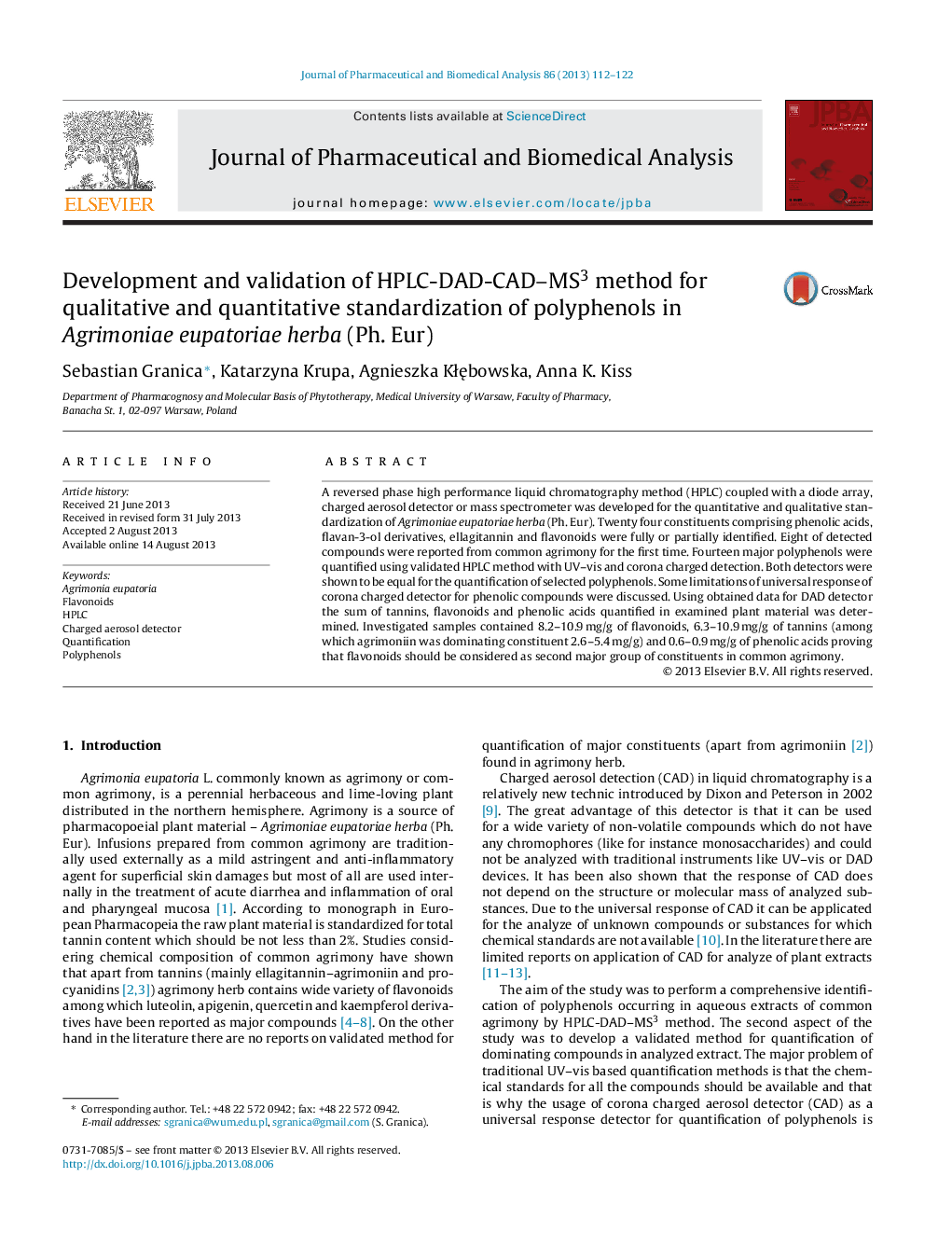| کد مقاله | کد نشریه | سال انتشار | مقاله انگلیسی | نسخه تمام متن |
|---|---|---|---|---|
| 1221889 | 1494649 | 2013 | 11 صفحه PDF | دانلود رایگان |

• Polyphenols pattern in Agrimoniae eupatoriae herba was determined using HPLC-DAD coupled with ion trap or corona charged aerosol detector.
• 24 compounds were detected and major 14 constituents were quantified.
• 8 polyphenols were reported from common agrimony for the first time.
• Some limitations of CAD as universal response detector were discussed.
A reversed phase high performance liquid chromatography method (HPLC) coupled with a diode array, charged aerosol detector or mass spectrometer was developed for the quantitative and qualitative standardization of Agrimoniae eupatoriae herba (Ph. Eur). Twenty four constituents comprising phenolic acids, flavan-3-ol derivatives, ellagitannin and flavonoids were fully or partially identified. Eight of detected compounds were reported from common agrimony for the first time. Fourteen major polyphenols were quantified using validated HPLC method with UV–vis and corona charged detection. Both detectors were shown to be equal for the quantification of selected polyphenols. Some limitations of universal response of corona charged detector for phenolic compounds were discussed. Using obtained data for DAD detector the sum of tannins, flavonoids and phenolic acids quantified in examined plant material was determined. Investigated samples contained 8.2–10.9 mg/g of flavonoids, 6.3–10.9 mg/g of tannins (among which agrimoniin was dominating constituent 2.6–5.4 mg/g) and 0.6–0.9 mg/g of phenolic acids proving that flavonoids should be considered as second major group of constituents in common agrimony.
Figure optionsDownload as PowerPoint slide
Journal: Journal of Pharmaceutical and Biomedical Analysis - Volume 86, December 2013, Pages 112–122